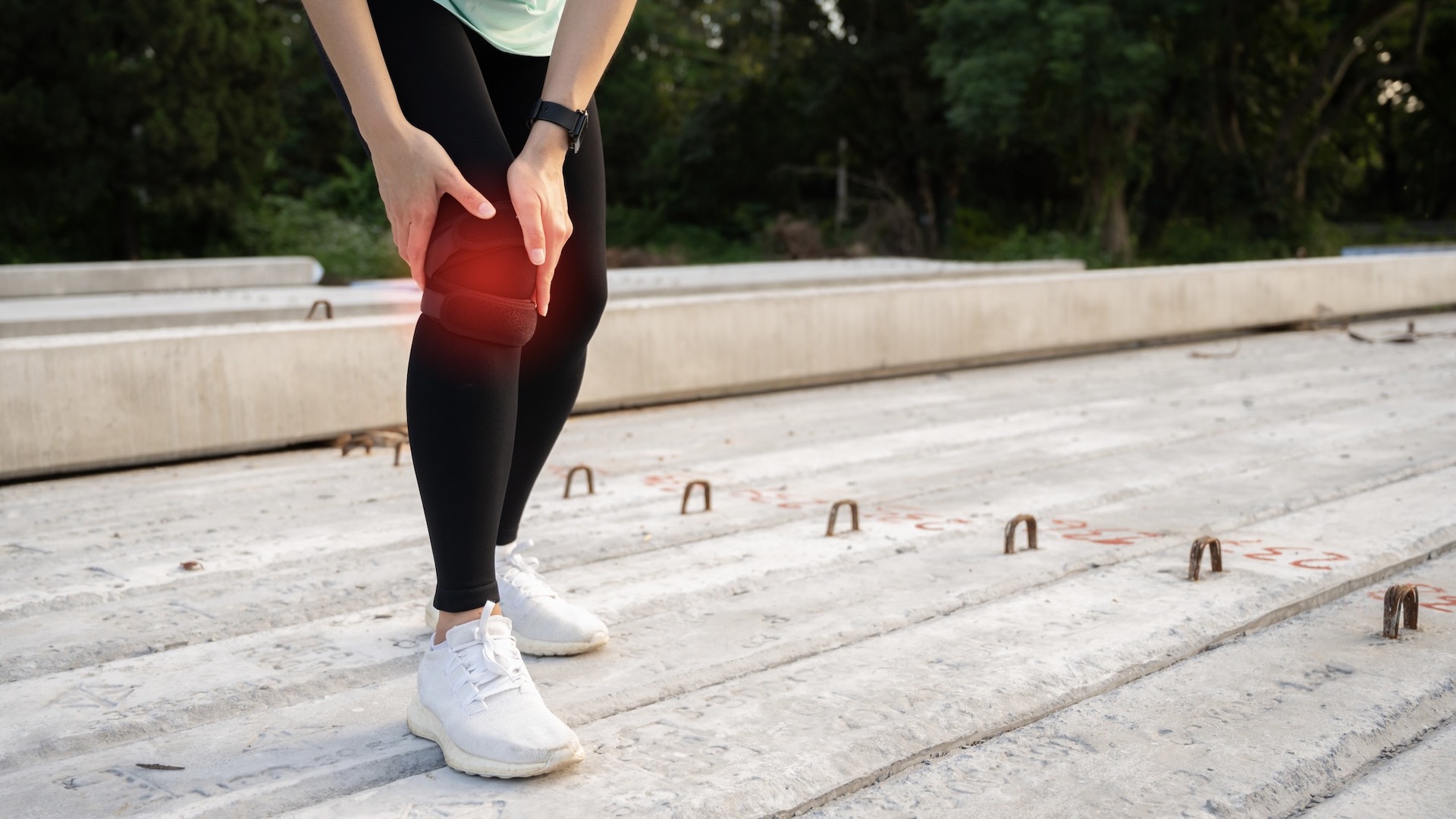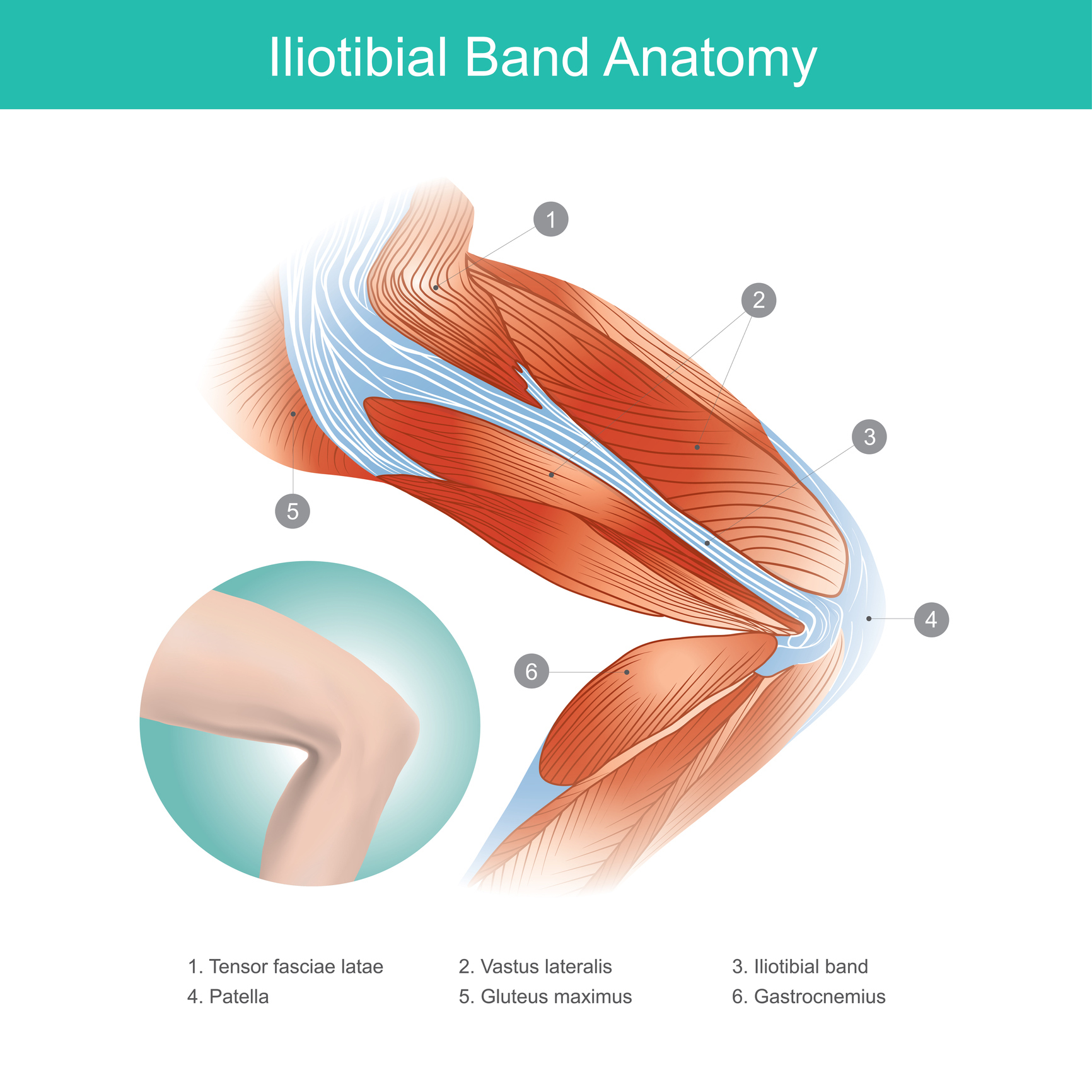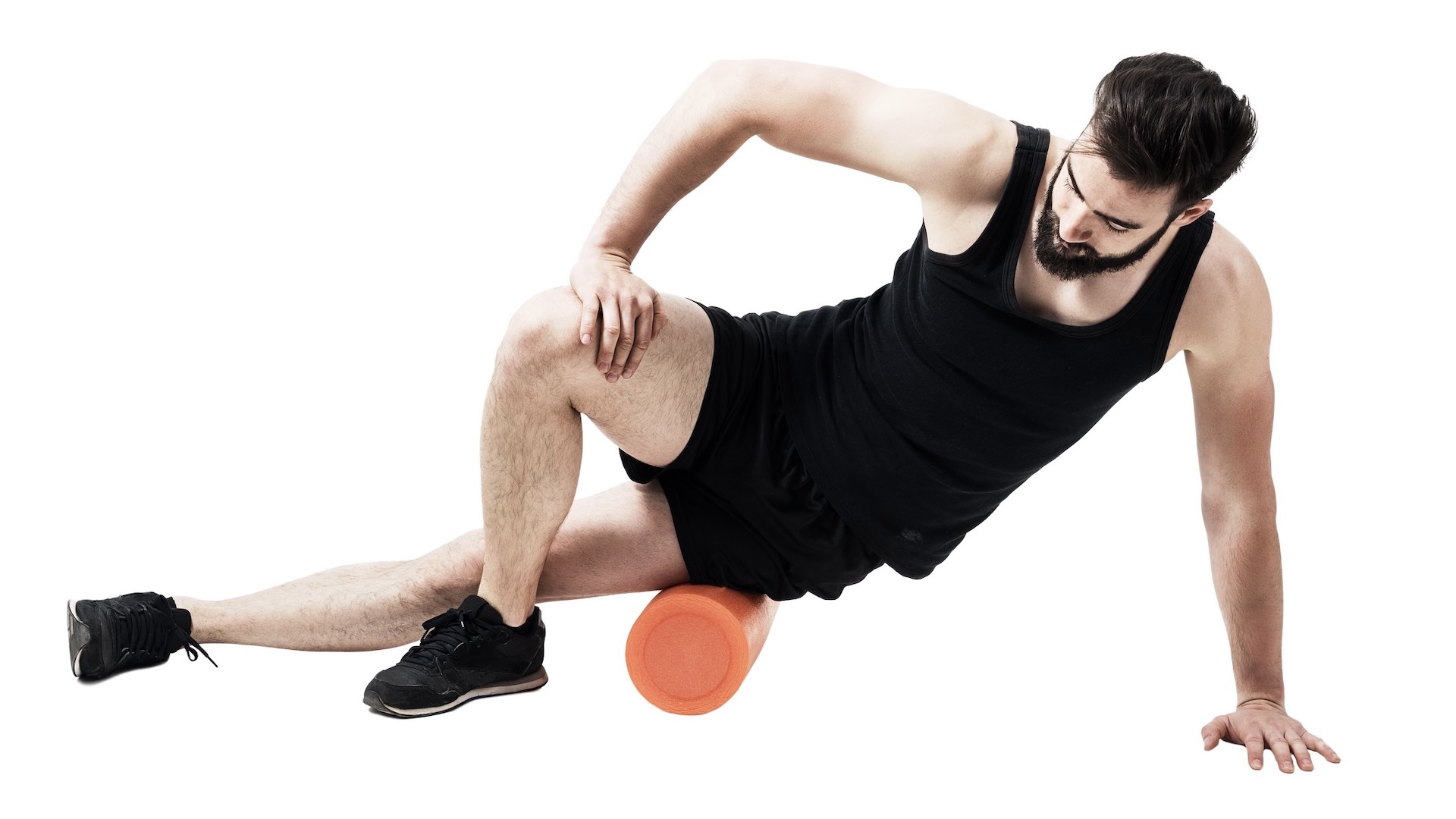What is IT band syndrome, and what does it mean for runners?
How can I avoid Iliotibial band syndrome and what to do if I suffer with ITBS

IT Band Syndrome, or ITBS, is short for Iliotibial Band Syndrome. A fairly common injury for runners, ITBS is usually felt in the lateral aspect of the knee or hip. Some runners also describe a clicking feeling in the knee.
The IT tendon is on the outside of the leg, and stretches from the top of the pelvic bone to the knee. If it becomes too tight or tense, the tendon will rub against the bones and cause pain.
ITBS occurs when the Iliotibial Band becomes irritated or swollen due to rubbing against the hip or knee bones.
Why does the IT Band tighten?
Tendons, which connect the muscles to bones, are usually flexible and an elastic-like fibrous tissue. So, when you squeeze a muscle, the tendon pulls on the bone to make it move.
However, tendons can become tight or tense, usually due to over-use or a repetitive movement, such as always running in the same way and without stretching. When the IT Band becomes tight it can lead to ITBS.
There are a variety of causes of IT Band Syndrome for runners:
- Weakness in hip abductors: Abduction of the hip occurs when the hip turns away from the body. When this is weak, it can cause the IT band to tighten.
- Tibial torsion: The tibia, or shinbone, can twist inwards and pull the IT band closer to the bones, causing tightness.
- Foot pronation: Different running gaits cause different foot rotations. When the foot rotates outwards it stretches the IT band and can cause it to come closer to the bone.

Other reasons for a tight IT band for runners
There are plenty of reasons why runners might suffer with a tight IT band, which can lead to a longer-term injury. They include:
Advnture Newsletter
All the latest inspiration, tips and guides to help you plan your next Advnture!
- Lack of rest and recovery
- Running too far, too soon
- Pushing yourself too hard without adequate build up
- Not stretching before and after exercise
- Running on a tilted or curved surface
- Running downhill
- When your favourite trail shoes wear out and cause gait imbalances.

What can I do about IT band syndrome?
Treatment will depend on the severity of the syndrome. To start with, you should try resting. If you avoid the exercise, such as running, that causes the most pain and take part in a gentler form of alternative exercise, including lots of recovery time, the IT band syndrome should go away.
Anti-inflammatory treatments such as Ibuprofen in tablet or gel form may also help with recovery from IT band syndrome.
A foam roller massage is recommended for treatment as well.
Sports massage therapy will be very useful if the syndrome persists. The treatment will focus on lengthening the iliotibial band and therefore reducing the tension.
You can also work on improving your running posture and try to work out why the syndrome is affecting you in the first place. For example, a better stretching routine will be helpful, as well as careful build up to running longer distances or moving from road to getting into trail running.
You might need a new pair of trail running shoes, too.
If the IT band syndrome continues, a course of steroid injections or, in some rare cases, surgery might be recommended.

How to reduce the risk of iliotibial band syndrome (ITBS)
It is better to prevent IT band syndrome than to suffer and need to recover.
These are the best ways to avoid IT band syndrome:
- Take adequate rest and recovery
- Follow a SMART trail running plan
- Stretch before running and cool down after running, including stretches
- Improve your running technique
- Shift training intensity gradually
- Wear more supportive shoes
IT Band Syndrome is a common injury for runners but if dealt with early on, rather than ignoring the pain, you'll recover much quicker.

Fiona Russell is a widely published adventure journalist and blogger, better known as Fiona Outdoors. She is based in Scotland and is an all-round outdoors enthusiast with favorite activities including trail running, mountain walking, mountain biking, road cycling, triathlon and skiing (both downhill and backcountry). Aside from her own adventures, Fiona's biggest aim is to inspire others to enjoy getting outside and exploring, especially through her writing. She is also rarely seen without a running skort! Find out more at Fiona Outdoors.
